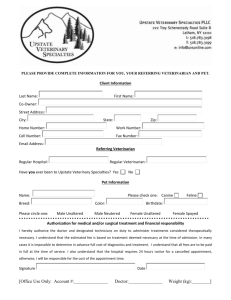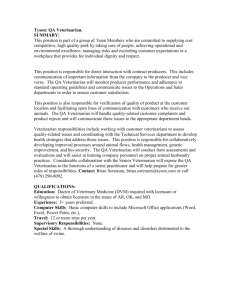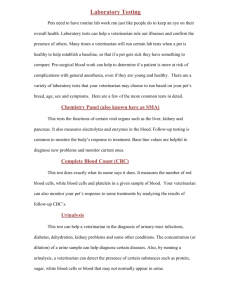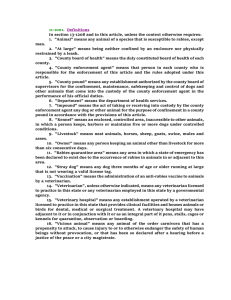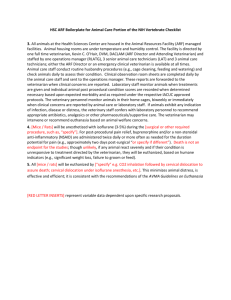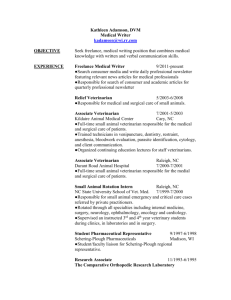UNDERSTANDING DRUG USE IN THE DAIRY ENTERPRISE
advertisement
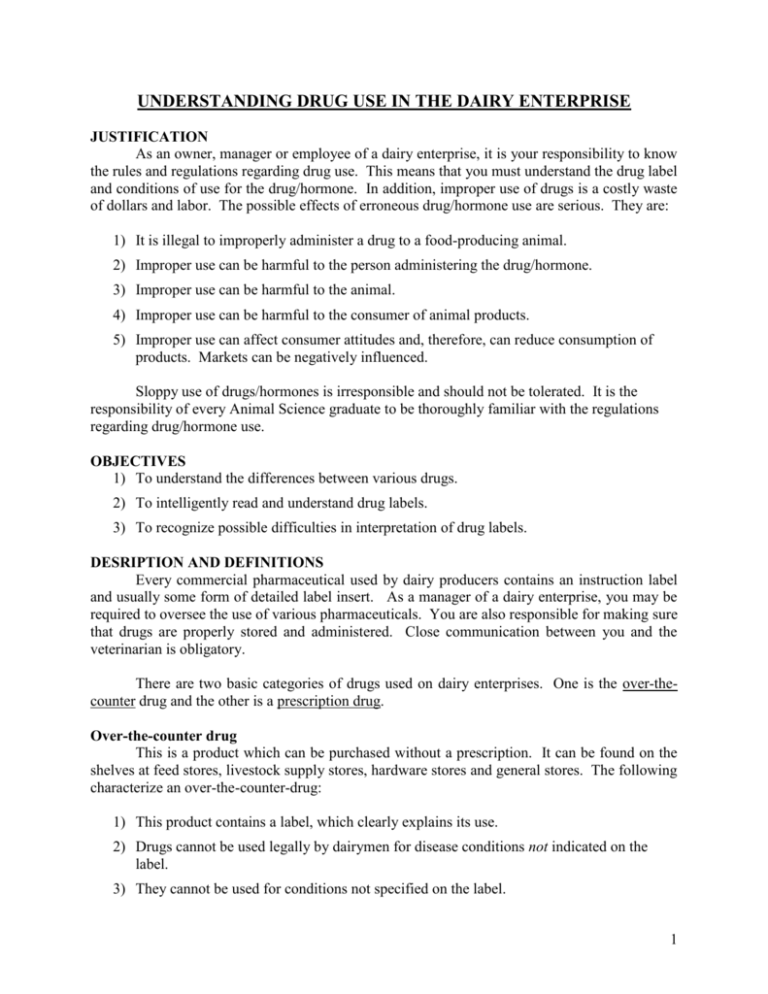
UNDERSTANDING DRUG USE IN THE DAIRY ENTERPRISE JUSTIFICATION As an owner, manager or employee of a dairy enterprise, it is your responsibility to know the rules and regulations regarding drug use. This means that you must understand the drug label and conditions of use for the drug/hormone. In addition, improper use of drugs is a costly waste of dollars and labor. The possible effects of erroneous drug/hormone use are serious. They are: 1) It is illegal to improperly administer a drug to a food-producing animal. 2) Improper use can be harmful to the person administering the drug/hormone. 3) Improper use can be harmful to the animal. 4) Improper use can be harmful to the consumer of animal products. 5) Improper use can affect consumer attitudes and, therefore, can reduce consumption of products. Markets can be negatively influenced. Sloppy use of drugs/hormones is irresponsible and should not be tolerated. It is the responsibility of every Animal Science graduate to be thoroughly familiar with the regulations regarding drug/hormone use. OBJECTIVES 1) To understand the differences between various drugs. 2) To intelligently read and understand drug labels. 3) To recognize possible difficulties in interpretation of drug labels. DESRIPTION AND DEFINITIONS Every commercial pharmaceutical used by dairy producers contains an instruction label and usually some form of detailed label insert. As a manager of a dairy enterprise, you may be required to oversee the use of various pharmaceuticals. You are also responsible for making sure that drugs are properly stored and administered. Close communication between you and the veterinarian is obligatory. There are two basic categories of drugs used on dairy enterprises. One is the over-thecounter drug and the other is a prescription drug. Over-the-counter drug This is a product which can be purchased without a prescription. It can be found on the shelves at feed stores, livestock supply stores, hardware stores and general stores. The following characterize an over-the-counter-drug: 1) This product contains a label, which clearly explains its use. 2) Drugs cannot be used legally by dairymen for disease conditions not indicated on the label. 3) They cannot be used for conditions not specified on the label. 1 Prescription drug Prescription drugs differ from over-the-counter drugs in that the prescription labels carry the following statement. CAUTION: FEDERAL LAW RESTRICTS THIS DRUG TO USE BY OR ON THE ORDER OF A LICENSED VETERINARIAN. This does not mean that the veterinarian has to administer the drug. It means that the veterinarian must show documented evidence that he has authorized this drug to be used properly. In addition to the manufacturer’s label, each prescription drug must have an additional label affixed to it. The label must contain the following: 1) The name of the prescribing veterinarian. Clinic or practice names are not acceptable. 2) Each container must be labeled. Labeling cases or bulk packs is not acceptable. Labels and/or product inserts on prescription drugs contain detailed information on the following: 1) description 2) safety and toxicity 3) metabolism 4) instructions for use 5) warnings, precautions, possible adverse reactions 6) dosages and administration EXTRA LABEL USE (ELUD) Use of a drug in a manner which is not specified on the labels is defined as extra label use. Extra label use is a decision that must be made by the veterinarian. Any ELUD must contain a label bearing the name and address of the veterinarian. Examples of extra label use include: 1) Use of a drug which is not approved for use in a class of animal, i.e., Banamine for cattle. 2) Alteration of doses. For example, label indicates that 1 ml per 100 lb body weight but 3 mg/100 lb is prescribed. Regardless of authorization by a veterinarian, it appears that the final legal responsibility for drug use rests with the producer. (See attached article entitled “Serious Drug Law Inequities.”) Attached you will find copies of label inserts from a drug. Study these inserts carefully and answer the following questions. You may have to consult the Physicians’ Desk Reference or the Veterinary Pharmaceuticals and Biologics to obtain some of the information. The Physicians’ Desk Reference (PDR) and the Veterinary Pharmaceuticals and Biologicals (VPB) are excellent reference books on drugs and biologics that are approved for use in humans and 2 animals, respectively, by FDA. Both references index products by manufacturer, product and category. This allows for easy reference when full information on a product is not known. In addition, both specific and general information on each product is given; most often, more information than is included on the product label. Thus, when additional information on a product’s chemical nature, method of function, efficacy, and spectrum of activity, are needed, these references should be consulted. They can be found in the reference section: PDR – call #RS75P5; and VPB – call #SF917C56. UNDERSTANDING THE LABEL The list of questions below are intended to serve as guidelines for each drug. You should be able to answer any questions about each drug that is used on the dairy enterprise. 1. Who can use the drug? 2. What kind of animal can receive the drug? (lactating, dry, growing) 3. What are the age restrictions? 4. What are the maximum frequencies of administration? 5. What are the doses? Why would doses vary? 6. How does the drug work? i.e., What physiology does it change or alter? 7. Are there any withdrawal periods required for meat or withholding times for milk? If so, what are their minimums? 8. What are the major precautions in using this drug? 9. What are the routes of administration? 10. Does the drug pose a health risk for any individual user? If so, what type of individual user is at risk? 11. Are there possible adverse reactions that the animal will experience when receiving this drug? 12. How should the drug be stored? 13. What is the expiration date on the drug? 14. Will the action of this drug interfere with that of another? 15. If you have questions and/or problems, who do you contact? STORAGE It is required that drugs for lactating cows and nonlactating cows (Dry cow and heifers) be stored in separate places. This includes drugs that must be refrigerated. Separate, labeled shelves in cabinets or refrigerators are satisfactory. Items such as fluids, vitamins, mineral preparations, topical products and vaccines can be stored in either area. 3
